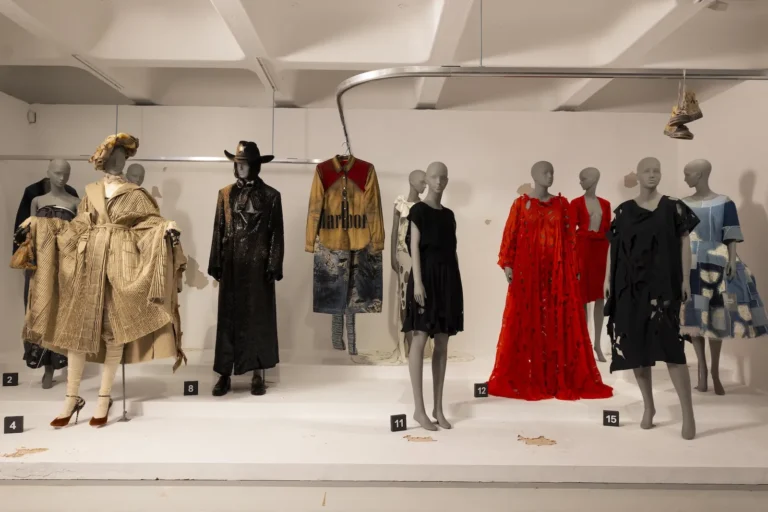The Barbican Centre in London has opened its latest fashion exhibition, Dirty Looks: Desire and Decay in Fashion, a daring exploration of beauty found in dirt, destruction, and imperfection. Running from September 25th, 2025 to January 25th, 2026, the show challenges glossy ideals of luxury with more than 120 garments that embrace decay as both material and metaphor.
Curated by Karen Van Godtsenhoven and Jon Astbury, the Barbican exhibition project presents fashion not simply as design but as an artistic practice that interrogates consumption, memory, and transformation.
A radical fashion exhibition on dirt and decay
At its core, Dirty Looks examines how garments buried in mud, stained with wine, or torn through wear can express resistance against industrial fashion’s relentless perfection. The curators suggest that since the 1970s, designers have used decay as a tool to question mass production and beauty standards. By focusing on fragility, materiality, and transformation, this Barbican exhibition shows how creativity emerges from breakdown and imperfection.
The staging itself reflects this ethos: plinths appear fractured, gallery walls show spidering fissures, and missing patches of plaster mimic trompe l’oeil decay. The result is an environment where imperfection is not hidden but celebrated.
Iconic garments and designers
Among the highlights is Hussein Chalayan’s groundbreaking graduate collection The Tangent Flows (1993). For this project, Chalayan buried garments with iron filings in soil, allowing rust and decay to mark the fabric. His technique, revisited over the next decade, suggests garments as living beings subject to cycles of transformation, echoing themes of time, archaeology, and renewal.
Another unforgettable moment comes from Alexander McQueen’s Highland Rape collection (Autumn/Winter 1995). A delicate lace dress, now too fragile to be displayed on a mannequin, lies encased in glass. Once shocking in its rawness, the piece now reads as an artifact of vulnerability and defiance, underscoring McQueen’s enduring ability to unsettle fashion’s narratives.
New works by Alice Potts push the concept of decay even further. Known for crystallizing human sweat, Potts was given a Madame Grès gown stained from past wear. By treating it with a solution derived from her own perspiration, she reframed bodily fluids not as shameful but as part of fashion’s lived history.
Decay aesthetics and new generations
The exhibition also highlights emerging designers experimenting with dirt and destruction. Solitude Studios reimagines garments submerged in bogs, their fabrics dyed and eroded by microorganisms (don’t miss our conversation with Solitude Studios where Sophia Martinussen and Jonas Sayed Gammal Bruun uncover the internal world behind their designs), while Paolo Carzana constructs romantic, crumpled ensembles in earthy shades that embody both fragility and resilience.
For these younger voices, decay is not merely aesthetic—it is regenerative. They approach fashion as a path toward renewal, using imperfection and material breakdown to critique consumerism and propose alternative, sustainable futures.Eight years since the Barbican Centre in London last staged a major-scale fashion exhibition, Dirty Looks signals a return to bold programming. By positioning dirt, fragility, and imperfection as central to beauty, the exhibition reframes fashion as both cultural critique and creative possibility.
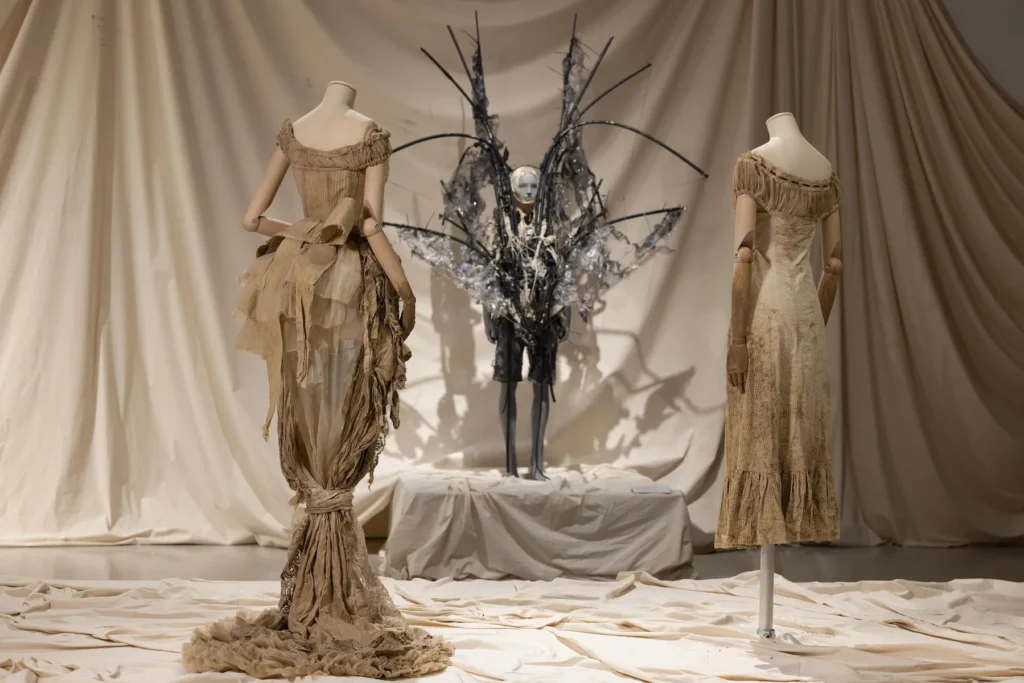
Courtesy of DAVID PARRY and BARBICAN ART GALLERY
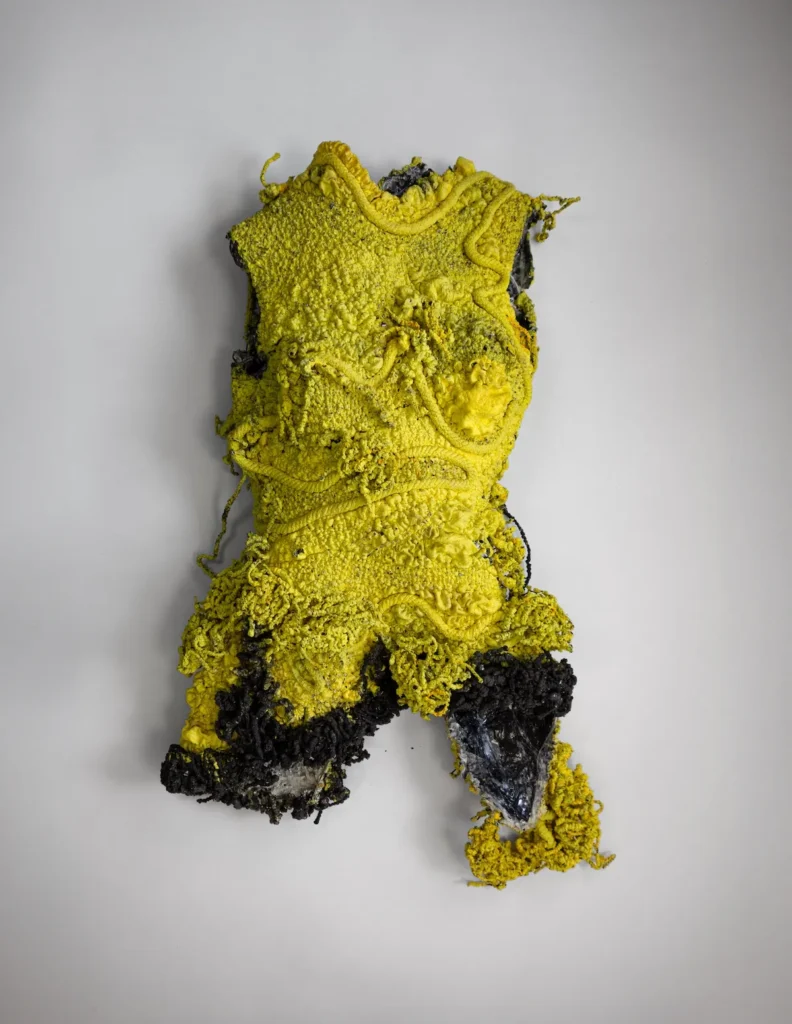
PIERO D’ANGELO, Physarum Lab
Photography by ELLEN SAMPSON
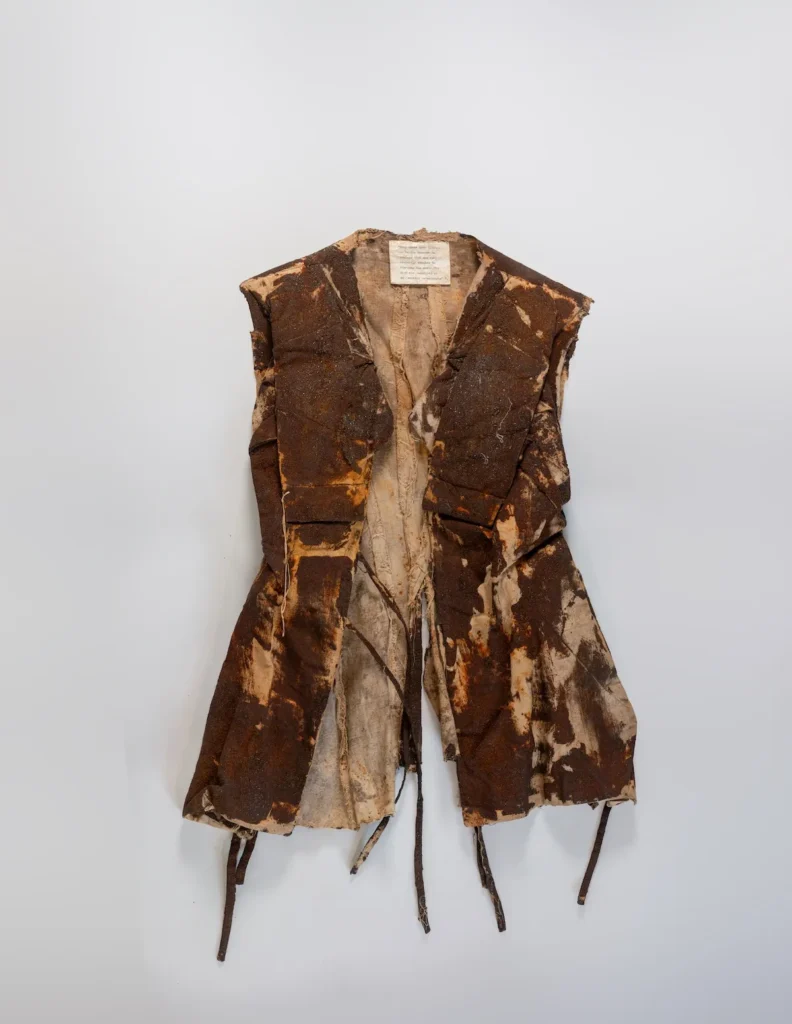
HUSSEIN CHALAYAN, The Tangent Flows, 1993
Photography by ELLEN SAMPSON
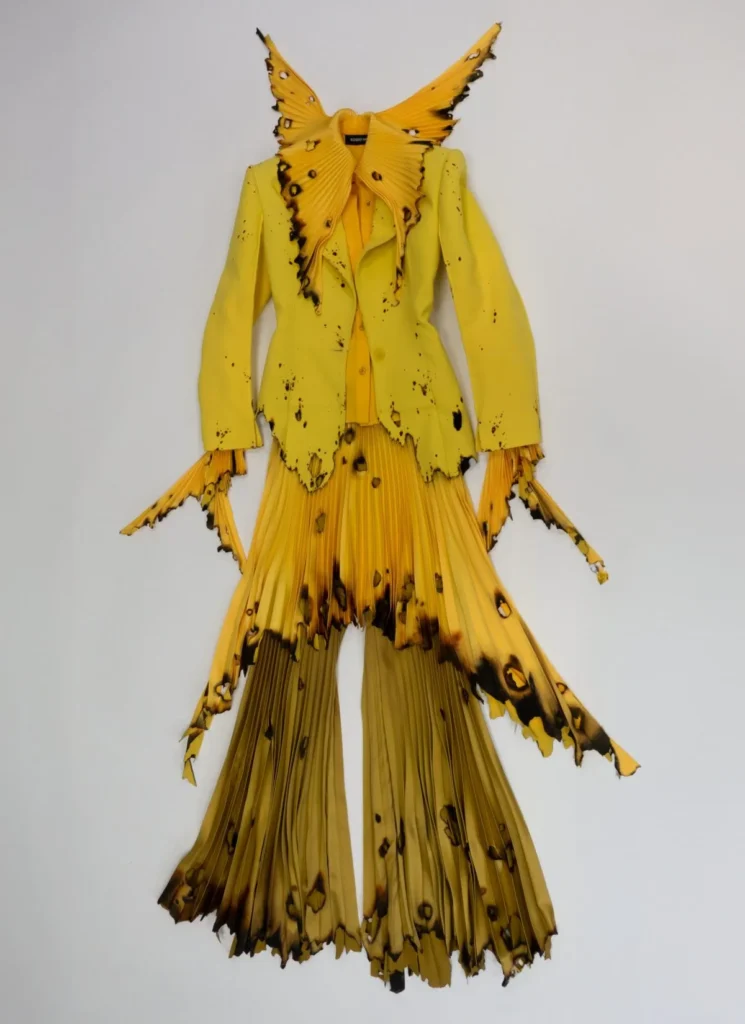
ROBERT WUN, The Yellow Rose, Time, Haute Couture Autumn/Winter 2024
Photography by ELLEN SAMPSON

Menswear Spring/Summer 2005
Photography by ELLEN SAMPSON
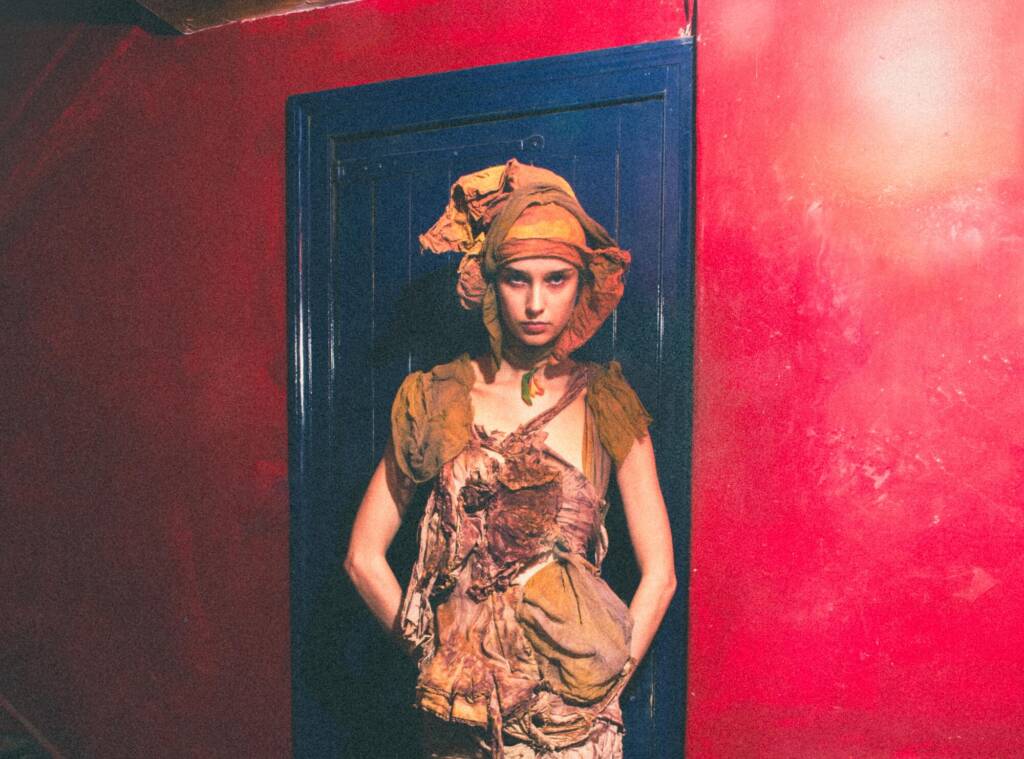
Autumn/Winter 2025, Dragons Unwinged at the Butchers Block
Photography by JOSEPH RIGBY, courtesy of PAOLO CARZANA
